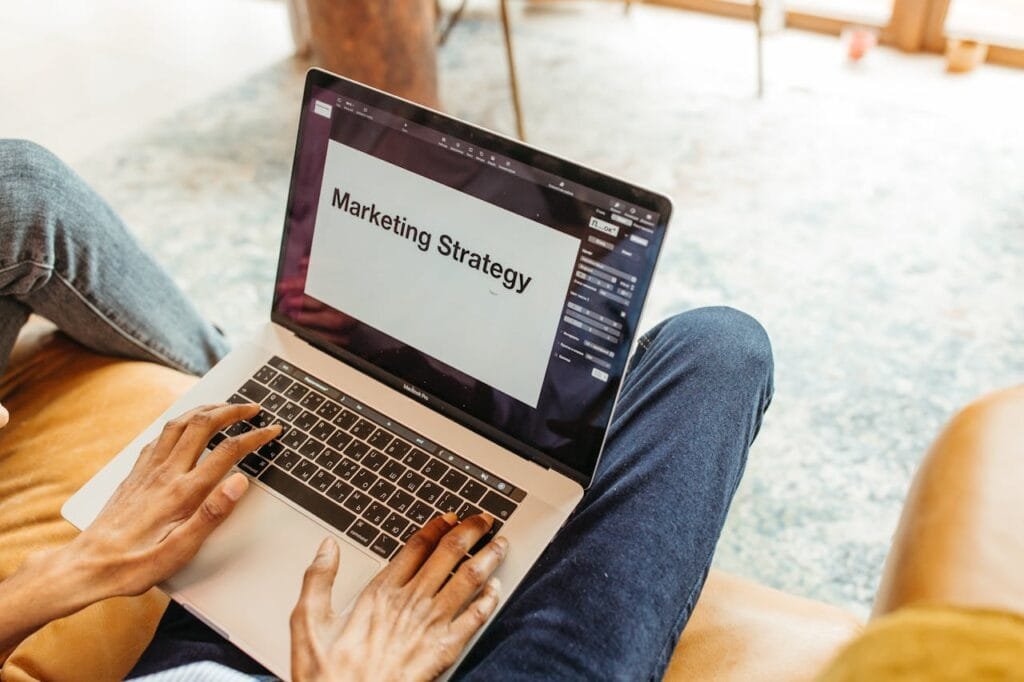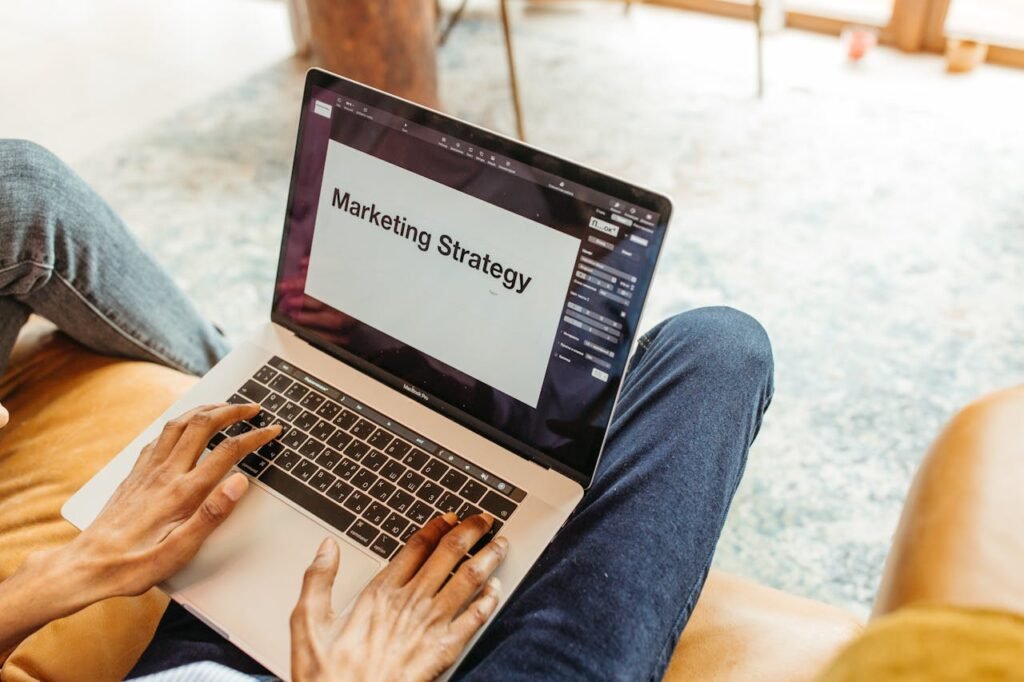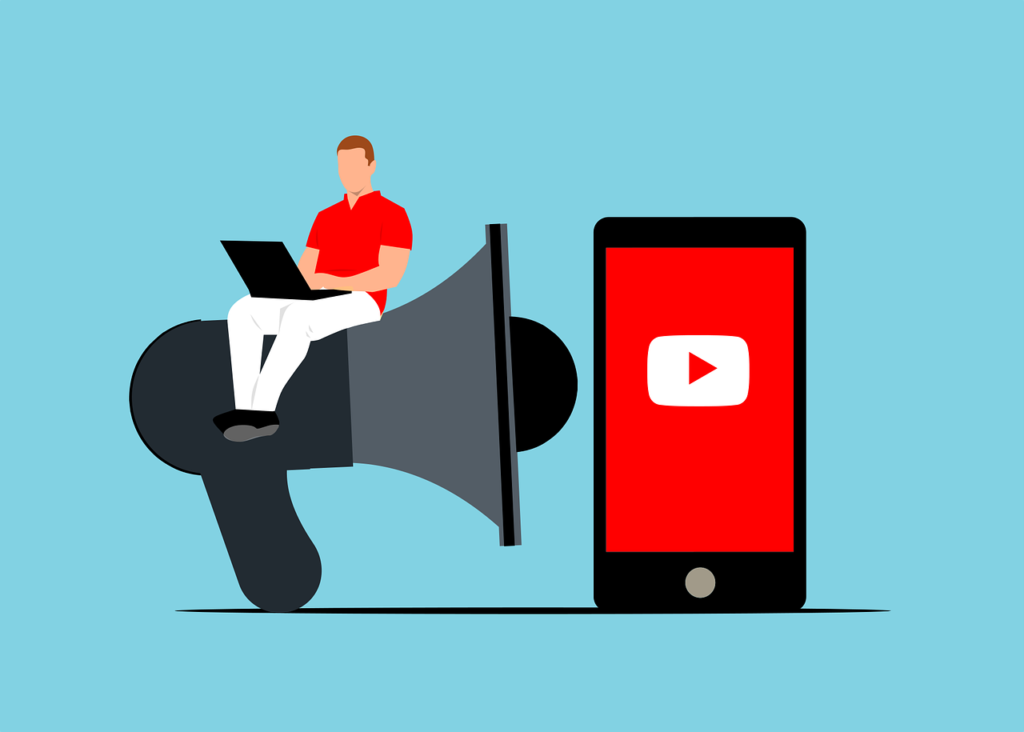Attracting traffic to your website is essential, but it’s what you do with that traffic that truly matters. When potential customers click through to your website, especially from SEO efforts, they’re often searching for specific answers or solutions. This is where landing pages come in. An optimized landing page can take an interested visitor and convert them into a valuable lead.
This guide will walk you through creating high-impact landing pages tailored for SEO traffic. We’ll dive into the principles of effective landing page design, elements that drive conversions, and advanced techniques to help CEOs make the most of their SEO traffic.
Why Landing Pages Are Essential for SEO Traffic
Turning Visitors Into Leads, Not Just Numbers
SEO-driven landing pages are critical because they turn search traffic into actionable results. SEO can bring people to your website, but landing pages are where they either stay and engage or leave. A high-impact landing page engages visitors by providing the information they’re looking for and encouraging them to take the next step, whether that’s filling out a form, signing up for a demo, or downloading a guide.
By creating landing pages that align with specific search intents, you not only increase conversions but also build trust, reduce bounce rates, and improve user engagement. All these factors help SEO rankings and conversion rates, creating a cycle of growth.
Matching User Intent for Maximum Engagement
Not all visitors come with the same goals. Some are in the research phase, while others are ready to make a decision. The key to an effective landing page is to match the visitor’s intent with relevant content and clear calls to action. When you align your landing pages with search intent, you create a seamless experience that guides users naturally toward conversion.
For example, a visitor landing on your page after searching “best CRM for small business” is likely in the consideration phase. A high-impact landing page for this search might include feature comparisons, customer testimonials, and an easy way to schedule a demo. This approach speaks directly to the visitor’s needs, increasing the chances of conversion.
Step 1: Start With Clear and Compelling Headlines

The Power of a Strong, Direct Headline
A headline is the first thing visitors see, and it should immediately communicate the value of the page. A great headline sets expectations and speaks directly to the user’s intent, letting them know they’re in the right place. For SEO-driven traffic, a strong headline reassures users that the page aligns with the search query that brought them there.
For instance, if someone searches “affordable CRM for small business,” a headline like “Affordable CRM Solutions for Small Businesses” tells them right away they’re in the right place. This clarity captures attention and encourages users to keep reading.
Use Subheadlines to Expand on the Headline
Subheadlines allow you to add extra context to your main headline. They can explain benefits, highlight specific features, or address potential pain points. For example, a subheadline like “Easily manage your customer relationships, increase sales, and save time with our intuitive CRM” gives users more reasons to stay on the page.
The combination of a powerful headline and a clear subheadline immediately answers the visitor’s question, holding their attention and building trust.
Step 2: Design for Simplicity and Focus
Remove Clutter to Keep Visitors Engaged
A clean, uncluttered layout helps visitors focus on what’s important—your offer and the next steps they can take. Avoid overwhelming visitors with too many options or irrelevant elements. Every section, image, and word on your landing page should serve a purpose and guide users toward conversion.
For example, if the goal of your landing page is to encourage users to sign up for a demo, don’t distract them with unrelated links or unnecessary images. A straightforward, focused design reduces friction and keeps users engaged, increasing the likelihood they’ll convert.
Use Whitespace Strategically
Whitespace, or negative space, is the area on the page that doesn’t contain any content or visual elements. Strategic use of whitespace can make your landing page look clean, professional, and easy to navigate. It helps guide the eye to important elements, such as headlines, CTAs, and forms.
For example, placing whitespace around your CTA button draws attention to it and makes it easier for users to find and click. Whitespace creates a sense of balance on the page, reducing cognitive load and making the experience smoother for visitors.
Step 3: Optimize Your Calls-to-Action (CTAs)
Make CTAs Clear, Actionable, and Relevant
Your CTA should be the natural next step for visitors, making it easy for them to understand what they’ll get by clicking. Use action-oriented language that speaks directly to the benefit they’ll receive, like “Start Your Free Trial” or “Download Your Guide.”
For example, if your page is designed for users searching “CRM free trial,” the CTA should match that interest, with language like “Get Your Free CRM Trial.” This alignment with search intent reassures visitors that they’re getting exactly what they came for.
Position CTAs Strategically on the Page
A high-impact landing page places CTAs where they’re most likely to capture attention. This typically includes above the fold (where users first see it without scrolling) and near the end of key sections. If the page is longer, include additional CTAs at intervals, so users don’t have to search to take action.
For example, if your landing page covers different benefits of your CRM, add a CTA button after each section, like “See These Benefits in Action—Get a Free Demo.” Repeated CTAs provide multiple entry points, making it easy for users to convert whenever they’re ready.
Step 4: Leverage Social Proof to Build Credibility

Use Testimonials That Speak to Visitor Pain Points
Social proof, such as testimonials, case studies, and reviews, reassures visitors that your product or service is trustworthy and effective. Testimonials are especially powerful when they address common concerns or pain points, helping visitors feel confident about taking the next step.
For example, if you’re targeting small business owners, use testimonials from similar businesses that highlight specific benefits, like “This CRM saved us hours each week and improved customer follow-up.” Such social proof is relatable and builds trust, increasing the chances of conversion.
Display Trust Badges and Certifications
Trust badges, such as “GDPR Compliant” or “SSL Secure,” add an extra layer of reassurance, especially if your landing page involves form submissions. For businesses in industries that require compliance (e.g., healthcare, finance), displaying relevant certifications or security badges helps visitors feel safe sharing their information.
For instance, adding a “Secure Checkout” badge near a form reassures visitors that their data is protected. These visual cues reinforce credibility, which is essential for high-impact landing pages.
Step 5: Craft Content That Speaks to User Intent
Provide Concise, Benefit-Driven Information
High-impact landing pages aren’t about cramming every detail onto the page. Instead, focus on delivering concise, benefit-driven content that speaks to the visitor’s needs. Start with the most relevant benefits, explaining why your product or service is valuable without overwhelming them with technical details.
For example, instead of listing every feature of a CRM, focus on benefits like “Streamline Your Sales Process,” “Track Customer Interactions Effortlessly,” and “Improve Customer Retention.” Clear, benefit-oriented language shows visitors how your solution can make a difference, encouraging them to stay and explore further.
Use Bullet Points for Quick Reading
Bullet points make it easy for visitors to scan key benefits or features. When you break down information into small, digestible points, you cater to visitors who are in a hurry or just skimming. For SEO-driven traffic, where users often have specific questions, this format makes it easy for them to find answers quickly.
For instance, highlight three or four major benefits of your product in bullet points near the top of the page. This structure gives visitors an immediate sense of value and encourages them to read more.
Step 6: Optimize Forms for a Frictionless Experience
Keep Forms Short and Simple
The fewer fields a form has, the more likely visitors are to fill it out. For lead generation, focus on capturing only essential information, like name and email. If you need more details, you can gather them in follow-up interactions. A simplified form reduces friction and increases the likelihood of conversions.
For example, instead of asking for detailed business information upfront, start with just a few fields, such as “Name” and “Email.” Once the lead is engaged, use other touchpoints to collect additional information. This gradual approach makes it easier for visitors to get started without feeling overwhelmed.
Place Forms Above the Fold (But Repeat Strategically)
For high-conversion landing pages, make sure the form is visible as soon as the page loads. If your page is longer, add a form or CTA at key points where visitors may be ready to engage, such as after a benefits section or testimonial. This layout ensures that visitors can convert whenever they’re ready without having to search.
For instance, if your landing page includes testimonials halfway down, add a form right after. This way, users who feel convinced by the testimonials don’t have to scroll back up to convert.

Related: Check out our free tools:

Step 7: Incorporate SEO-Friendly Elements for Enhanced Visibility
Optimize Meta Tags and Headings
Meta tags and headings are critical for SEO, helping search engines understand your content and match it to relevant queries. For landing pages targeting specific keywords, optimize meta titles and descriptions to reflect the user’s search intent and encourage clicks. Use headings (H1, H2) to structure content clearly, making it both SEO-friendly and easy to navigate.
For example, if your landing page targets “Affordable CRM for Startups,” include this keyword in your meta title and description, as well as in key headers. This alignment with search terms improves visibility and draws in qualified traffic.
Improve Load Speed for Better User Experience and Rankings
Page load speed impacts both SEO rankings and user experience. A slow-loading landing page can frustrate visitors, leading them to leave before even seeing your content. Use tools like Google PageSpeed Insights to identify areas for improvement and ensure that your landing page loads quickly on both desktop and mobile.
For example, optimize images, use caching, and reduce unnecessary scripts to boost load speed. Faster load times improve user experience and reduce bounce rates, which benefits both SEO and conversions.
Step 8: Use A/B Testing to Fine-Tune Performance
Test Different Elements for Optimal Results
A/B testing, or split testing, allows you to experiment with different versions of your landing page to see which elements lead to better conversions. Test various elements, such as headlines, CTAs, images, or form placement, to identify what resonates most with your audience.
For instance, test a headline like “Affordable CRM for Small Businesses” against “Boost Sales with Our Small Business CRM.” Measure which version leads to more conversions, then implement the higher-performing elements. Continuous testing helps you refine your landing page for optimal results.
Use Data to Make Informed Changes
Leverage analytics to track the performance of each landing page element, from time on page to form submissions. By understanding user behavior, you can make data-driven adjustments that enhance user experience and increase conversion rates.
For example, if data shows that visitors spend the most time on a specific section, consider adding a CTA nearby. Analytics provide valuable insights that help you optimize every aspect of your landing page for maximum impact.
Step 9: Leverage Personalization for Targeted Engagement

Tailor Landing Pages to Different Audience Segments
One way to elevate the effectiveness of your landing pages is through personalization. By tailoring content and offers to different audience segments, you make each visitor feel like the page was created specifically for them. Use data like geographic location, user behavior, or the source of traffic to customize the experience.
For example, if you know a visitor came from a PPC ad targeting “CRM solutions for healthcare,” adjust the headline and examples on the landing page to reflect the healthcare industry. Personalized pages resonate more deeply with visitors, helping them feel understood and increasing the likelihood of conversion.
Use Dynamic Content to Deliver Customized Experiences
Dynamic content allows you to change specific elements on your landing page based on visitor data. For instance, you could greet returning visitors by name, showcase products they’ve shown interest in, or highlight industry-specific features. This level of customization makes your landing page more relevant and engaging, encouraging visitors to stay and convert.
For example, if a user previously viewed a product demo, display a “See How Our CRM Transformed [Industry]” case study section when they return. Dynamic content adds a personal touch that holds attention and enhances the chances of conversion.
Step 10: Optimize for Mobile to Capture On-the-Go Leads
Ensure a Mobile-Responsive Design
With mobile traffic continuously growing, optimizing landing pages for mobile devices is no longer optional. A mobile-responsive design ensures that your landing page adapts to different screen sizes, providing a seamless experience for users on any device. Mobile users are often on the go, so your page should load quickly, display cleanly, and make navigation easy.
For example, use large, easy-to-tap buttons for CTAs, reduce the need for scrolling, and avoid heavy graphics that slow down load times. A responsive design helps you capture leads from mobile users by providing a frictionless experience that encourages them to engage and convert.
Simplify Forms for Mobile Users
Filling out lengthy forms on a mobile device can be challenging. For mobile users, keep forms as short as possible and use input fields that are optimized for touch, such as dropdowns instead of text fields. You can also enable autofill options to make it faster for users to complete the form.
For example, a form that asks only for “Name” and “Email” is ideal for mobile. You can request additional information later in follow-up emails. Streamlining forms for mobile reduces friction and keeps users engaged, making it more likely they’ll complete the conversion.
Step 11: Use Visuals to Communicate Value and Build Interest

Incorporate Relevant, High-Quality Images
Images play a crucial role in making your landing page visually appealing, but they should also be relevant and add value. Use images that demonstrate the product, show real customer experiences, or highlight features in a clear and impactful way. Avoid stock photos that feel generic, as they can make the page feel less authentic.
For example, if your page promotes CRM software, include a screenshot or a simplified diagram that shows how the dashboard works. Visuals that illustrate the product or its benefits help users better understand what you offer, reinforcing their interest in taking action.
Consider Using Video for Deeper Engagement
Video content can increase user engagement by giving visitors a clear, concise overview of your product or service. A short, 60-second video can provide a compelling snapshot of what you offer, explaining benefits and showcasing features more effectively than text alone. Videos are particularly effective for SEO-driven landing pages, as they keep users on the page longer, signaling relevance to search engines.
For example, a product demo video that walks visitors through key features of your CRM software provides a visual story that’s easy to understand. Placing the video near your CTA can also encourage users to convert after watching. Video content is an investment, but it pays off in higher engagement and conversion rates.
Step 12: Address Common Objections and Questions
Use an FAQ Section to Address Visitor Concerns
An FAQ section at the bottom of the page can address common questions or objections that might hold users back from converting. This section anticipates doubts visitors might have, providing quick answers that can help reassure them and encourage action. By addressing objections upfront, you create a smoother path to conversion.
For example, if one concern is pricing, include an FAQ that explains pricing options, any available trials, or financing options. For a landing page promoting software, answer questions about integration with existing tools, data security, or customer support. An FAQ section that tackles real concerns shows transparency and builds trust, making it easier for users to move forward.
Use Testimonials to Overcome Potential Doubts
Including testimonials or case studies from real users can help address doubts by providing social proof. A well-placed testimonial that addresses a common concern (like ease of use or ROI) can give visitors the reassurance they need to proceed. Social proof from other customers reinforces the credibility of your offer and validates the visitor’s decision to convert.
For instance, if your product’s price point is high, a testimonial highlighting the return on investment can make visitors feel more confident about the cost. Placing this testimonial near your CTA encourages users to take action, overcoming potential objections and closing the sale.
Final Thoughts: Building High-Impact Landing Pages for Lasting Success
Creating high-impact landing pages is about more than just driving traffic; it’s about turning that traffic into valuable leads. By aligning your landing pages with user intent, simplifying design, and incorporating persuasive elements, you create an experience that engages visitors and encourages them to take action.
The key to success lies in continual optimization. Regularly update and test your landing pages based on performance data and user feedback to keep them effective and relevant. As your business evolves, so should your landing pages, adapting to meet the changing needs of your audience and the latest best practices in SEO and lead optimization.
With high-impact landing pages, you not only capture leads but also build trust, reinforce brand credibility, and drive sustainable growth for your business.
READ NEXT:
- Are Vanity Metrics Killing Your Marketing Efficiency? Here’s What to Track Instead
- Pinpointing Digital Marketing ROI: Why Your Metrics Aren’t Telling the Full Story
- Unlocking Real ROI in Digital Marketing: The Hidden Costs Draining Your Budget
- How Misaligned Marketing Funnels Are Blocking Your ROI Potential
- Best Digital Marketing Agency In Santa Ana, California
- Best Digital Marketing Agency In San Francisco, California





















